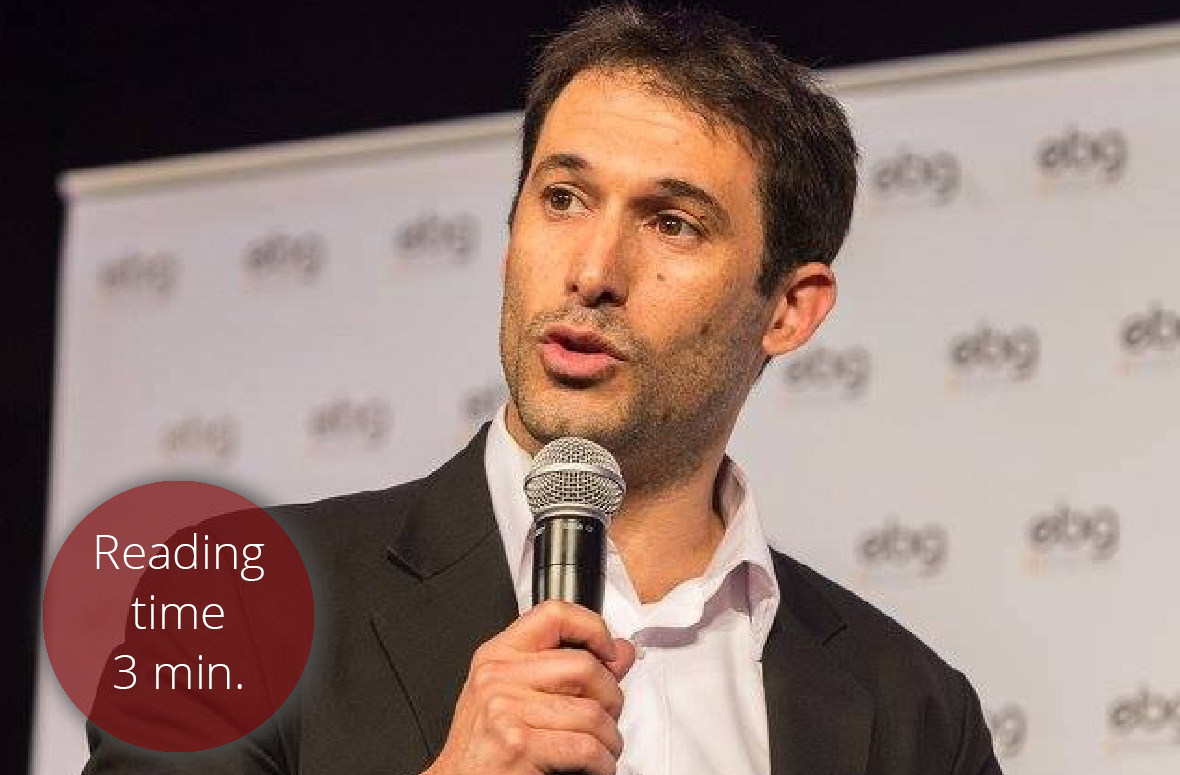How to Raise a Seed Round in 2022
06.06.2022

You were just about to go out and raise your seed round and now this - tech stocks are crashing like it is 2000, rumor has it that term sheets are being ripped. But then again aren’t VCs sitting on like €150 billion of untouched money that they need to invest? And what about those big rounds that are celebrated on Linkedin every week?
We live in turbulent and confusing times and raising money during the next twelve months will be a challenge. But if you are early in your entrepreneurial journey things are not as bad as you might think.
“There is about as much venture money up for grabs as the annual GDP of Greece. But this money is not collecting dust on the VCs' bank accounts, it has been committed to them by their investors, the so-called limited partners (LPs). When public markets tank and interest rates go up, venture capital gets a whole lot riskier and LPs tell the VCs to hold their horses and stop investing. Those funding rounds you are seeing on Linkedin are all yesterday's news, being announced now to pretend that the party is still on. Many VCs have not done a deal since January and by Q3 they will be chilling on the beach. No one wants to catch a falling knife. As long as public market valuations are crashing, private market ones will as well,’ Axel Bard Bringéus, co-founder @informed shared.
Investors are shedding crocodile tears on Twitter, but behind closed doors, they are celebrating. Founders have been dancing around their noses for years, playing them out against each other and plucking cash out of their pockets. Overinvested funds might risk being wiped out, but many VCs are early in their fund life cycles and are salivating at the current market conditions. They are already playing hardball - terms are being negotiated after signing and valuations are being slashed.
But VCs will feel the pain as well. Believe it or not, they also have to fundraise. LPs were desperate to put cash into oversubscribed funds just a few months ago - but after the spectacular wipeout of Tiger Global et al, they will think again before touching a VC fund. The flood of money flowing into venture capital will ebb off into a tiny dribble and if bad performance continues, startup land might find itself in a vicious circle with less and less capital finding its way into the ecosystem. This will inevitably impact the ability of founders to raise funds for years to come.
Action plan for founders when raising money in the next 3 - 6 months as per Axel’s advise
1. Raise now and raise big
VCs have time horizons of up to 10 years on seed investments. No one expects the slump to last that long, so there is still a lot of money out there for early stage rounds. For a while, there might even be more than before, as multi-stage investors will prefer to go early rather than invest in price sensitive late stage rounds. But things might change fast and as mentioned VCs don’t get free refills anymore. So go out and raise now and take as much money as you can before it is too late. And then make that money last as long as you possibly can.
2. Adapt your valuation expectations
If you think you lucked out and envy all those who raised at eye dropping valuations in 2020 and 2021 you are wrong. What felt great at the time will turn into a massive headache by the time those founders need to raise again. There will be down rounds… Take a look at your public market peers, how they are performing and how their valuation multiples have been impacted. If you are in the future of work, maybe sit down before you check out Zoom’s revenue multiple. But if you are in cyber security, 2022 will not be that different from before. Even early-stage investors will compare you to your public market peers, so adapt your plans accordingly. Very few founders go through their startup life without hitting a bear market, better to face it now, rather than when you want to exit. And if you can’t settle on a valuation you can always raise a convertible and price when the market is calmer.
3. Dust off that business model slide
The business model and those unit economics calculations that no one cared about back in November might come in handy now. When even Uber is haling free cash flow as their north star, it is time to show the market that you have a robust plan to generate revenue. A-rounds without a single cent of revenue? Forget about it… And all revenue is not created equal. Show that you can generate sustainable, predictable, high gross-margin revenue as cash efficiently as possible and that your unit economics are in check.
4. Most importantly, plan your raise well
The tables might have turned. But with all this said, don’t let the market conditions get to your head. The next couple of years will be tough, but if you learn the tools of the trade, you can still have VCs chasing you and not the other way around. But raising money will require more focus and preparation than ever.
We live in turbulent and confusing times and raising money during the next twelve months will be a challenge. But if you are early in your entrepreneurial journey things are not as bad as you might think.
“There is about as much venture money up for grabs as the annual GDP of Greece. But this money is not collecting dust on the VCs' bank accounts, it has been committed to them by their investors, the so-called limited partners (LPs). When public markets tank and interest rates go up, venture capital gets a whole lot riskier and LPs tell the VCs to hold their horses and stop investing. Those funding rounds you are seeing on Linkedin are all yesterday's news, being announced now to pretend that the party is still on. Many VCs have not done a deal since January and by Q3 they will be chilling on the beach. No one wants to catch a falling knife. As long as public market valuations are crashing, private market ones will as well,’ Axel Bard Bringéus, co-founder @informed shared.
Investors are shedding crocodile tears on Twitter, but behind closed doors, they are celebrating. Founders have been dancing around their noses for years, playing them out against each other and plucking cash out of their pockets. Overinvested funds might risk being wiped out, but many VCs are early in their fund life cycles and are salivating at the current market conditions. They are already playing hardball - terms are being negotiated after signing and valuations are being slashed.
But VCs will feel the pain as well. Believe it or not, they also have to fundraise. LPs were desperate to put cash into oversubscribed funds just a few months ago - but after the spectacular wipeout of Tiger Global et al, they will think again before touching a VC fund. The flood of money flowing into venture capital will ebb off into a tiny dribble and if bad performance continues, startup land might find itself in a vicious circle with less and less capital finding its way into the ecosystem. This will inevitably impact the ability of founders to raise funds for years to come.
Action plan for founders when raising money in the next 3 - 6 months as per Axel’s advise
1. Raise now and raise big
VCs have time horizons of up to 10 years on seed investments. No one expects the slump to last that long, so there is still a lot of money out there for early stage rounds. For a while, there might even be more than before, as multi-stage investors will prefer to go early rather than invest in price sensitive late stage rounds. But things might change fast and as mentioned VCs don’t get free refills anymore. So go out and raise now and take as much money as you can before it is too late. And then make that money last as long as you possibly can.
2. Adapt your valuation expectations
If you think you lucked out and envy all those who raised at eye dropping valuations in 2020 and 2021 you are wrong. What felt great at the time will turn into a massive headache by the time those founders need to raise again. There will be down rounds… Take a look at your public market peers, how they are performing and how their valuation multiples have been impacted. If you are in the future of work, maybe sit down before you check out Zoom’s revenue multiple. But if you are in cyber security, 2022 will not be that different from before. Even early-stage investors will compare you to your public market peers, so adapt your plans accordingly. Very few founders go through their startup life without hitting a bear market, better to face it now, rather than when you want to exit. And if you can’t settle on a valuation you can always raise a convertible and price when the market is calmer.
3. Dust off that business model slide
The business model and those unit economics calculations that no one cared about back in November might come in handy now. When even Uber is haling free cash flow as their north star, it is time to show the market that you have a robust plan to generate revenue. A-rounds without a single cent of revenue? Forget about it… And all revenue is not created equal. Show that you can generate sustainable, predictable, high gross-margin revenue as cash efficiently as possible and that your unit economics are in check.
4. Most importantly, plan your raise well
The tables might have turned. But with all this said, don’t let the market conditions get to your head. The next couple of years will be tough, but if you learn the tools of the trade, you can still have VCs chasing you and not the other way around. But raising money will require more focus and preparation than ever.









